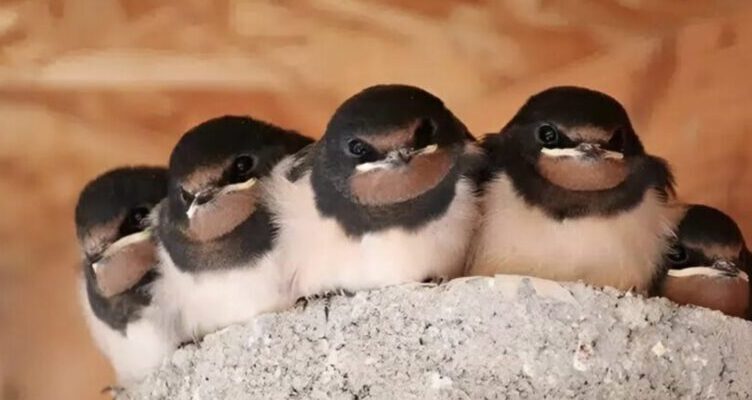Each spring, as the first warm rays of sunlight grace the earth, a familiar sight returns to the sky—graceful, winged beings known as swallows.
These nimble, feathered marvels dance through the air like miniature spirits, gliding with such lightness it seems they ride the breeze as if it were a river of silk.
Their movement captivates the eye—effortless, almost weightless elegance. For centuries, they’ve symbolized more than natural wonder; they carry deep-rooted, ancestral meanings across countless cultures.
Swallows are no ordinary birds: they’ve long been considered messengers from the heavens, bearing powers to influence not only the seasons but the course of human fate itself.
Why do we instinctively respect and cherish them? What lies hidden in the quiet miracle of a swallow nesting beneath your roof?
Across the ages, swallows have stood as emblems of spiritual truth and seasonal change. They are not only signs of returning spring but heralds of affection, serenity, and unity.

Old beliefs surround them with mystique—many say they only choose homes where goodwill and openheartedness dwell.
A swallow’s nest symbolizes togetherness and warmth, believed to bring luck and protection to those who live beneath it.
So if a swallow builds its delicate nest under your eaves, it may be more than chance—it might be the universe offering a gentle affirmation: here, there is kindness and sanctuary.
The presence of a swallow’s nest is far more than a rustic charm; it holds symbolic depth that touches the soul.
Folk traditions speak of the nest warding off evil, misfortune, and even shielding the house from nature’s wrath—such as storms or lightning strikes.
These silent, feathery guardians act as benevolent sentries, watching over households without fuss, yet filling the space with unseen harmony.
In many regions, the arrival of swallows is seen as a harbinger of rejuvenation and renewed optimism. They signal the retreat of winter’s grip and the reawakening of both the natural world and the human heart.
In the past, people paid close attention to the swallows’ behavior to predict the weather’s intentions.
High flight suggested sunshine and dryness; low swooping hinted at moisture in the air, a sign of rain or turbulence.
If they returned early in the year, it was considered a promise of abundance and prosperity.
These observations were more than folklore—they were evidence of humanity’s timeless bond with nature’s rhythms.
Their song—light, fluttering chirps—is not mere sound. For many, it is the melody of freedom, life, and quiet joy.
That cheerful chatter seems like a whisper from the skies, blending the rhythm of the earth with the poetry of emotion.
Their music carries warmth, suggests bright days ahead, and unites seasonal cycles with our inner world.
In the realm of legend and spirit, swallows also hold a revered place. One touching tale tells of them trying to ease Christ’s pain by removing the nails from his cross.
Since then, they have been seen as blessed creatures, and their nests as sacred spaces worthy of deep reverence.
In some places, to disturb a swallow’s nest is believed to bring ill fortune, even to break spiritual law—so strong is their connection to divine favor.
Many superstitions and symbolic meanings have survived the centuries, passed down through stories and sayings that both entertain and enlighten.
For instance, if a swallow flies into your home, it’s said to herald an important message or change.
If one perches on your window ledge, it may suggest a period of rest or reflection is approaching.

If it circles your house, it might signify fatigue or emotional unrest within your family.
An abandoned nest can point to household discord. But if a swallow flies straight toward you—it’s a sign of good fortune, a blessing in motion.
That’s why it’s vital never to harm these creatures. Tradition warns that misfortune could follow those who do.
It is far wiser and more meaningful to greet them with reverence, gratitude, and tenderness—for their presence is a gift from the earth itself,
returning each year as a soft reminder that life moves in cycles, hope never fades, and there is always room for care and protection in this world.
So the next time you notice a swallow building its tiny nest beneath your rooftop, remember:
it’s not just a bird arriving—it’s an ancient force of purity, a quiet sentinel who brings with it the promise of safety, family well-being, and the whisper of joy.
This small wonder is a living emblem of nature’s affection and the everlasting renewal of life.
